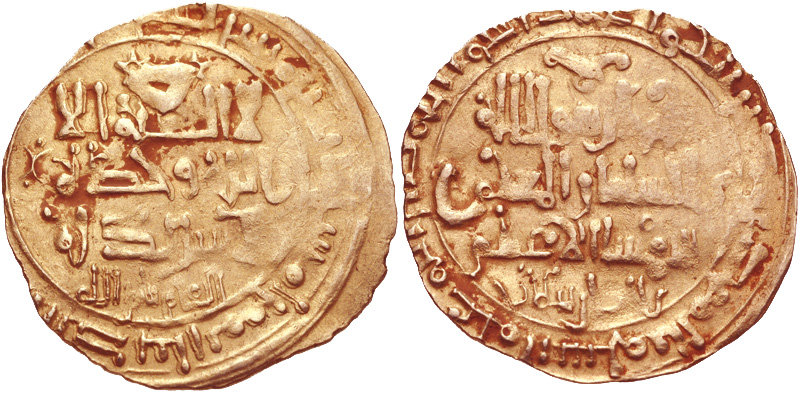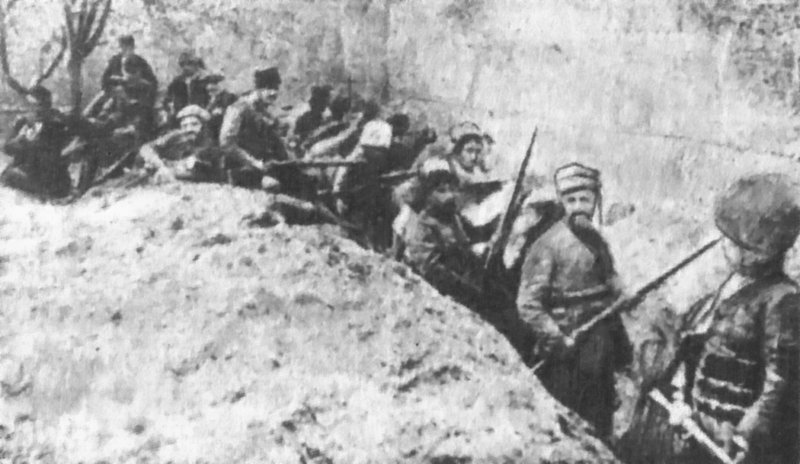|
Sarıkamış
Sarıkamış or Sarikamish (, ) is a town in Kars Province in the Eastern Anatolia Region of Turkey. It is the seat of Sarıkamış District.İlçe Belediyesi Turkey Civil Administration Departments Inventory. Retrieved 1 March 2023. Its population is 15,260 (2022). The town is perhaps best known for being the site of the , one of the major battles of the Caucasus front of World War I. [...More Info...] [...Related Items...] OR: [Wikipedia] [Google] [Baidu] |
Kars Province
Kars Province ( tr, Kars ili; ku, Parêzgeha Qersê; hy, Կարսի նահանգ) is a province of Turkey, located in the northeastern part of the country. It shares part of its closed border with Armenia. The provincial capital is the city of Kars. The provinces of Ardahan and Iğdır were until the 1990s part of Kars Province. History In ancient times, Kars ( hy, Կարս) was part of the province of Ararat in the Kingdom of Armenia. The first known people were the followers of Vanand (Վանանդ), for whom Kars was their main settlement and fortress. In 928, Kars became the capital of Bagratid Armenia. In 968, the capital of Armenia was moved to Ani, but Kars remained the capital of the feudal principality of Vanand. The Seljuks quickly relinquished direct control over Kars and it became a small emirate whose territory corresponded closely to that of Vanand, and which bordered the similarly created but larger Shaddadid emirate centered at Ani. The Kars emirate was a vassa ... [...More Info...] [...Related Items...] OR: [Wikipedia] [Google] [Baidu] |
Alp Arslan
Alp Arslan was the second Sultan of the Seljuk Empire and great-grandson of Seljuk, the eponymous founder of the dynasty. He greatly expanded the Seljuk territory and consolidated his power, defeating rivals to the south and northwest, and his victory over the Byzantines at the Battle of Manzikert, in 1071, ushered in the Turkoman settlement of Anatolia. "But the Battle of Manzikert opened Asia Minor to Turkmen conquest" For his military prowess and fighting skills, he obtained the name ''Alp Arslan'', which means "Heroic Lion" in Turkish. Early life Alp Arslan was the son of Chaghri and nephew of Tughril, the founding Sultans of the Seljuk Empire. His grandfather was Mikail, who in turn was the son of the warlord Seljuk. He was the father of numerous children, including Malik-Shah I and Tutush I. It is unclear who the mother or mothers of his children were. He was known to have been married at least twice. His wives included the widow of his uncle Tughril, a Kara-Khanid pr ... [...More Info...] [...Related Items...] OR: [Wikipedia] [Google] [Baidu] |
Caucasus Campaign
The Caucasus campaign comprised armed conflicts between the Russian Empire and the Ottoman Empire, later including Armenia, Azerbaijan, Georgia, the Mountainous Republic of the Northern Caucasus, the German Empire, the Central Caspian Dictatorship, and the British Empire, as part of the Middle Eastern theatre during World War I. The Caucasus campaign extended from the South Caucasus to the Armenian Highlands region, reaching as far as Trabzon, Bitlis, Mush and Van. The land warfare was accompanied by naval engagements in the Black Sea. The Russian military campaign started on 1 November 1914 with the Russian invasion of Turkish Armenia. In February 1917, the Russian advance was halted following the Russian Revolution. The Russian Caucasus Army soon disintegrated and was replaced by the forces of the newly established Armenian state, comprising Armenian volunteer units and irregular units which had previously been part of the Russian Army. During 1918 the region also s ... [...More Info...] [...Related Items...] OR: [Wikipedia] [Google] [Baidu] |
Gyumri
Gyumri ( hy, Գյումրի, ) is an urban municipal community and the second-largest city in Armenia, serving as the administrative center of Shirak Province in the northwestern part of the country. By the end of the 19th century, when the city was known as Alexandropol,; hy, Ալեքսանդրապոլ it became the largest city of Russian-ruled Eastern Armenia with a population above that of Yerevan. The city became renown as a cultural hub, while also carrying significance as a major center of Russian troops during Russo-Turkish wars of the 19th century. The city underwent a tumultuous period during and after World War 1. While Russian forces withdrew from the South Caucasus due to the October Revolution, the city became host to large numbers of Armenian refugees fleeing the Armenian Genocide, in particular hosting 22,000 orphaned children in around 170 orphanage buildings. It was renamed to Leninakan; russian: Ленинакан during the Soviet period and became a major i ... [...More Info...] [...Related Items...] OR: [Wikipedia] [Google] [Baidu] |
Kars
Kars (; ku, Qers; ) is a city in northeast Turkey and the capital of Kars Province. Its population is 73,836 in 2011. Kars was in the ancient region known as ''Chorzene'', (in Greek Χορζηνή) in classical historiography ( Strabo), part of Kingdom of Armenia (antiquity), in Ayrarat province, and later the capital of Bagratid Kingdom of Armenia in 929–961. Currently, the mayor of Kars is Türker Öksüz. The city had an Armenian ethnic majority until it was conquered by Turkish nationalist forces in late 1920. Etymology The city's name may be derived from the Armenian word հարս (''hars''), meaning "bride". Another hypothesis has it that the name derives from the Georgian word "the gate. History Medieval period Little is known of the early history of Kars beyond the fact that, during medieval times, it had its own dynasty of Armenian rulers and was the capital of a region known as Vanand. Medieval Armenian historians referred to the city by a variety of names, in ... [...More Info...] [...Related Items...] OR: [Wikipedia] [Google] [Baidu] |
Kars Oblast
The Kars Oblast was a province (''oblast'') of the Caucasus Viceroyalty of the Russian Empire between 1878 and 1917. Its capital was the city of Kars, presently in Turkey. The ''oblast'' bordered the Ottoman Empire to the west, the Batum Oblast (in 1883–1903 part of the Kutaisi Governorate) to the north, the Tiflis Governorate to the northeast, and the Erivan Governorate to the east. The Kars Oblast included parts of the contemporary provinces of Kars, Ardahan, and Erzurum Province of Turkey, and the Amasia Community of the Shirak Province of Armenia. History The Kars Oblast was a province established after the region's annexation into the Russian Empire through the Treaty of San Stefano in 1878, following the defeat of the Ottoman Empire and the dissolution of the latter's Kars, Childir and Erzurum ''eyalets''.Карсская об� ... [...More Info...] [...Related Items...] OR: [Wikipedia] [Google] [Baidu] |
Russo-Turkish War (1877–1878)
The Russo-Turkish War of 1877–1878 ( tr, 93 Harbi, lit=War of ’93, named for the year 1293 in the Islamic calendar; russian: Русско-турецкая война, Russko-turetskaya voyna, "Russian–Turkish war") was a conflict between the Ottoman Empire and a coalition led by the Russian Empire, and including Bulgaria, Romania, Serbia, and Montenegro. Fought in the Balkans and in the Caucasus, it originated in emerging 19th century Balkan nationalism. Additional factors included the Russian goals of recovering territorial losses endured during the Crimean War of 1853–56, re-establishing itself in the Black Sea and supporting the political movement attempting to free Balkan nations from the Ottoman Empire. The Russian-led coalition won the war, pushing the Ottomans back all the way to the gates of Constantinople, leading to the intervention of the western European great powers. As a result, Russia succeeded in claiming provinces in the Caucasus, namely Kars and Batum, a ... [...More Info...] [...Related Items...] OR: [Wikipedia] [Google] [Baidu] |
Russian Empire
The Russian Empire was an empire and the final period of the Russian monarchy from 1721 to 1917, ruling across large parts of Eurasia. It succeeded the Tsardom of Russia following the Treaty of Nystad, which ended the Great Northern War. The rise of the Russian Empire coincided with the decline of neighbouring rival powers: the Swedish Empire, the Polish–Lithuanian Commonwealth, Qajar Iran, the Ottoman Empire, and Qing China. It also held colonies in North America between 1799 and 1867. Covering an area of approximately , it remains the third-largest empire in history, surpassed only by the British Empire and the Mongol Empire; it ruled over a population of 125.6 million people per the 1897 Russian census, which was the only census carried out during the entire imperial period. Owing to its geographic extent across three continents at its peak, it featured great ethnic, linguistic, religious, and economic diversity. From the 10th–17th centuries, the land ... [...More Info...] [...Related Items...] OR: [Wikipedia] [Google] [Baidu] |
Ottoman Empire
The Ottoman Empire, * ; is an archaic version. The definite article forms and were synonymous * and el, Оθωμανική Αυτοκρατορία, Othōmanikē Avtokratoria, label=none * info page on book at Martin Luther University) // CITED: p. 36 (PDF p. 38/338) also known as the Turkish Empire, was an empire that controlled much of Southeast Europe, Western Asia, and Northern Africa between the 14th and early 20th centuries. It was founded at the end of the 13th century in northwestern Anatolia in the town of Söğüt (modern-day Bilecik Province) by the Turkoman tribal leader Osman I. After 1354, the Ottomans crossed into Europe and, with the conquest of the Balkans, the Ottoman beylik was transformed into a transcontinental empire. The Ottomans ended the Byzantine Empire with the conquest of Constantinople in 1453 by Mehmed the Conqueror. Under the reign of Suleiman the Magnificent, the Ottoman Empire marked the peak of its power and prosperity, as well a ... [...More Info...] [...Related Items...] OR: [Wikipedia] [Google] [Baidu] |
Kars Eyalet
The Eyalet of Kars ( ota, ایالت قارص; Eyālet-i Ḳarṣ) was an eyalet (province) of the Ottoman Empire. Its reported area in the 19th century was . The town of Kars, which had been levelled to the ground by the Timur in 1368, was rebuilt as an Ottoman fortress in 1579 (1580 according to other sources) by Lala Mustafa Pasha, and became capital of an eyalet of six sanjaks and also a place of pilgrimage. By M. Th. Houtsma It was conquered by Shah Abbas in 1604 and rebuilt by the Turks in 1616. The size of the Kars garrison in 1640s was 1,002 Janissaries and 301 local recruits. Total 1,303 garrison.Ottoman Warfare 1500-1700, Rhoads Murphey, 1999, p.226 Administrative divisions Sanjaks of Kars Eyalet in the 17th century: By Evliya Çelebi, Joseph von Hammer-Purgstall # Little Erdehan Sanjak (Göle) # Hujujan Sanjak (Çıldır) # Zarshad Sanjak (Arpaçay) # Kechran Sanjak ( Tunçkaya (Keçivan)) # Kaghizman Sanjak (Kağızman) # Kars Sanjak Kars (; ku, Qers; ) is ... [...More Info...] [...Related Items...] OR: [Wikipedia] [Google] [Baidu] |
Selim I
Selim I ( ota, سليم الأول; tr, I. Selim; 10 October 1470 – 22 September 1520), known as Selim the Grim or Selim the Resolute ( tr, links=no, Yavuz Sultan Selim), was the Sultan of the Ottoman Empire from 1512 to 1520. Despite lasting only eight years, his reign is notable for the enormous expansion of the Empire, particularly his conquest between 1516 and 1517 of the entire Mamluk Sultanate of Egypt, which included all of the Levant, Hejaz, Tihamah and Egypt itself. On the eve of his death in 1520, the Ottoman Empire spanned about , having grown by seventy percent during Selim's reign. Selim's conquest of the Middle Eastern heartlands of the Muslim world, and particularly his assumption of the role of guardian of the pilgrimage routes to Mecca and Medina, established the Ottoman Empire as the pre-eminent Muslim state. His conquests dramatically shifted the empire's geographical and cultural center of gravity away from the Balkans and toward the Middle East. By th ... [...More Info...] [...Related Items...] OR: [Wikipedia] [Google] [Baidu] |
.png)



.jpg)

